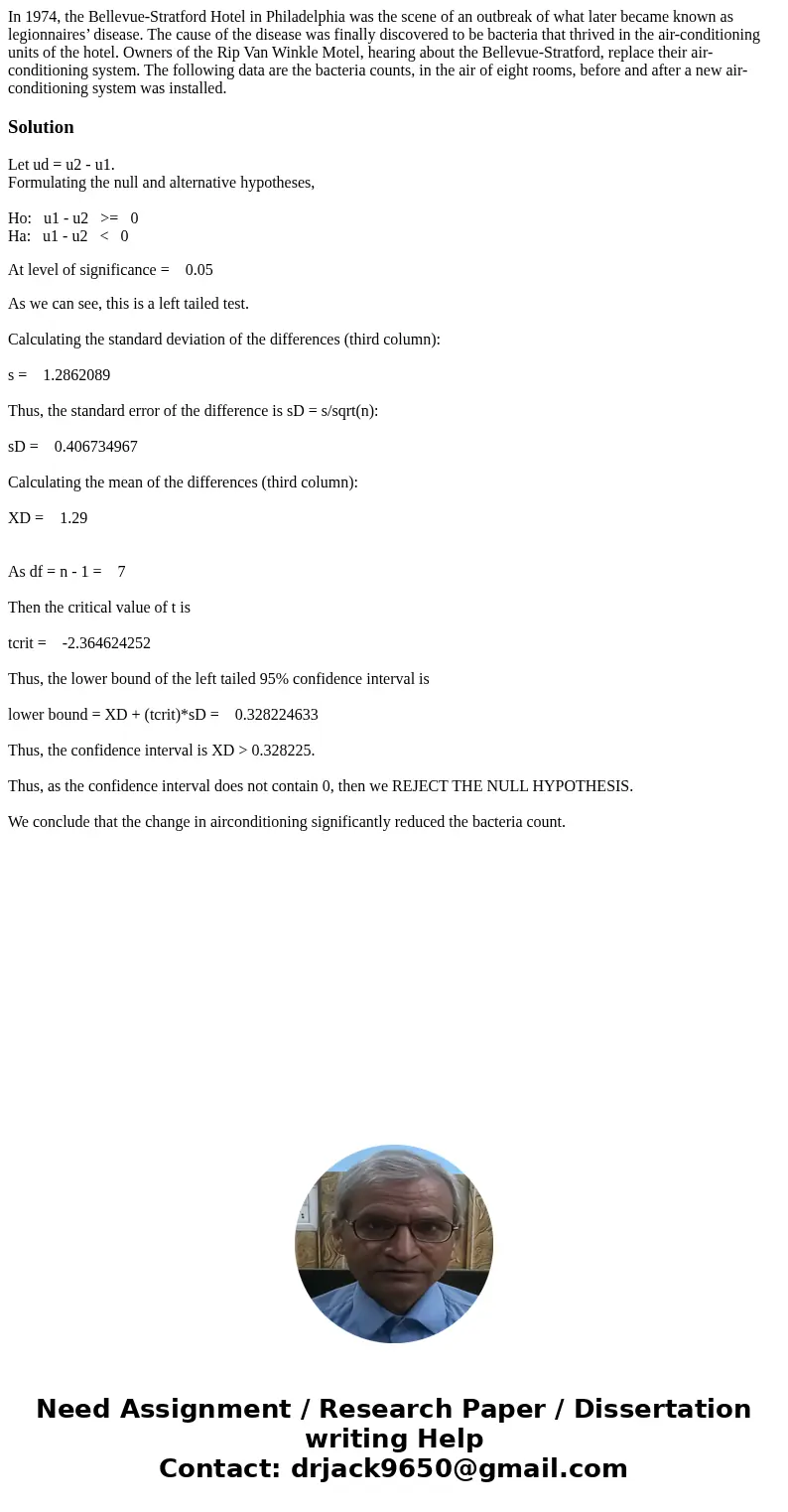In 1974 the BellevueStratford Hotel in Philadelphia was the
In 1974, the Bellevue-Stratford Hotel in Philadelphia was the scene of an outbreak of what later became known as legionnaires’ disease. The cause of the disease was finally discovered to be bacteria that thrived in the air-conditioning units of the hotel. Owners of the Rip Van Winkle Motel, hearing about the Bellevue-Stratford, replace their air-conditioning system. The following data are the bacteria counts, in the air of eight rooms, before and after a new air-conditioning system was installed.
Solution
Let ud = u2 - u1.
Formulating the null and alternative hypotheses,
Ho: u1 - u2 >= 0
Ha: u1 - u2 < 0
At level of significance = 0.05
As we can see, this is a left tailed test.
Calculating the standard deviation of the differences (third column):
s = 1.2862089
Thus, the standard error of the difference is sD = s/sqrt(n):
sD = 0.406734967
Calculating the mean of the differences (third column):
XD = 1.29
As df = n - 1 = 7
Then the critical value of t is
tcrit = -2.364624252
Thus, the lower bound of the left tailed 95% confidence interval is
lower bound = XD + (tcrit)*sD = 0.328224633
Thus, the confidence interval is XD > 0.328225.
Thus, as the confidence interval does not contain 0, then we REJECT THE NULL HYPOTHESIS.
We conclude that the change in airconditioning significantly reduced the bacteria count.

 Homework Sourse
Homework Sourse